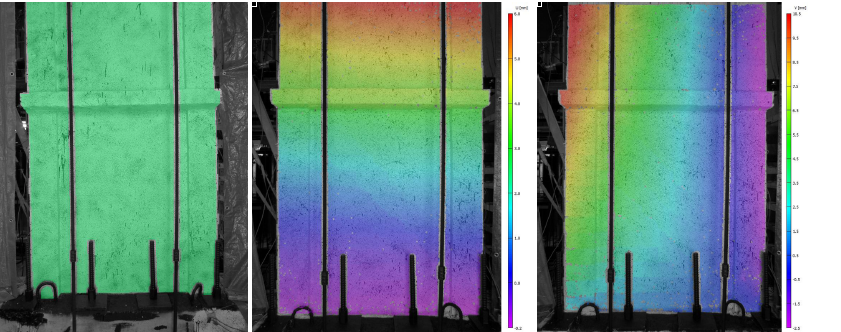1 Ph.D., Department of Civil Engineering, McMaster University, Hamilton, ON, Canada, bantinbr@mcmaster.ca
2 Martini, Mascarin and George Chair in Masonry Design, Co-Director, Centre for Effective Design of Structures, Department of Civil Engineering, Hamilton, ON, L8S 4L7, Canada, eldak@mcmaster.ca
ABSTRACT
The use of digital image correlation (DIC) has been prevalent in aeronautical and mechanical engineering fields for several decades. It is only recently that with the commercial availability of high resolution digital cameras and analysis software that it has become common within large scale testing of concrete and masonry structural elements. Three walls were instrumented and tested using digital image correlation to measure strains on the wall surface. In this paper, the measurements taken represent a simplified and accurate means of measuring surface crack widths as well as deformation in the walls. An equation is proposed to estimate flexural crack widths from traditional LVDT measurements for curvature and these values are compared to those collected from DIC. Based on this analysis combined with more traditional observations, the definition and identification of damage states within boundary element walls was defined towards the development of the next-generation of seismic design codes. Based on this technique, each damage state can be linked with the type of method of repair as well as the extent of such a repair method.
KEYWORDS: concrete block, design codes, shear wall, shear strength
365.pdf



